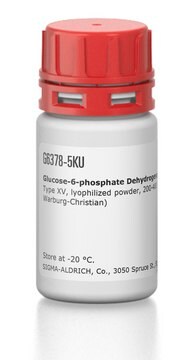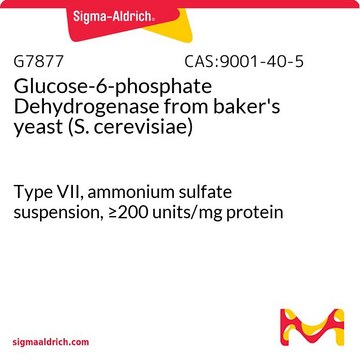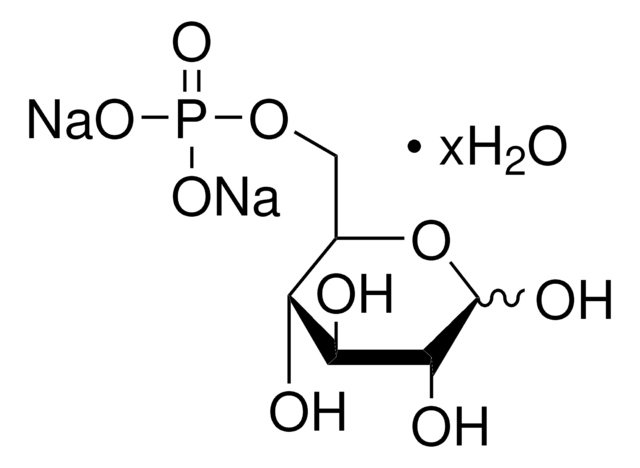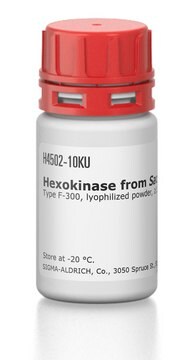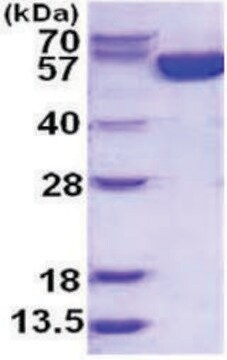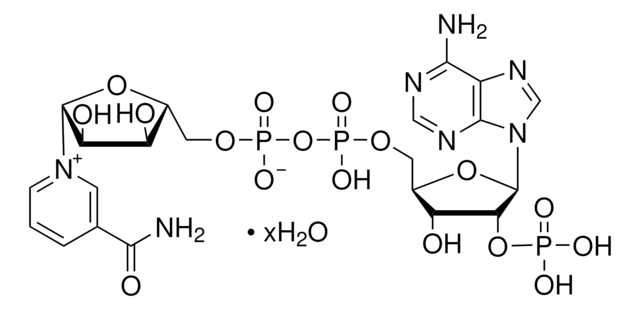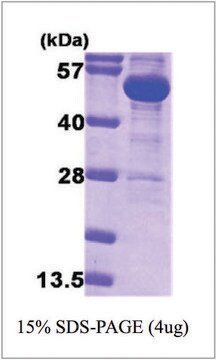G5885
Glucose-6-phosphate Dehydrogenase from Leuconostoc mesenteroides
lyophilized powder, >= 550 units/mg protein (biuret)
Sinónimos:
G-6-P-DH
About This Item
Productos recomendados
biological source
bacterial (Leuconostoc mesenteroides)
Quality Level
type
Type XXIV
form
lyophilized powder
specific activity
>= 550 units/mg protein (biuret)
mol wt
128 kDa
composition
Protein, 15-40% biuret
application(s)
agriculture
foreign activity
6-Phosphogluconic dehydrogenase, hexokinase, NADH oxidase and NADPH oxidase ≤0.005%
PGI ≤0.01%
storage temp.
2-8°C
¿Está buscando productos similares? Visita Guía de comparación de productos
General description
Application
Biochem/physiol Actions
Unit Definition
Physical form
signalword
Danger
hcodes
pcodes
Hazard Classifications
Resp. Sens. 1
Storage Class
11 - Combustible Solids
wgk_germany
WGK 3
flash_point_f
Not applicable
flash_point_c
Not applicable
ppe
Eyeshields, Gloves, type N95 (US)
Certificados de análisis (COA)
Busque Certificados de análisis (COA) introduciendo el número de lote del producto. Los números de lote se encuentran en la etiqueta del producto después de las palabras «Lot» o «Batch»
¿Ya tiene este producto?
Encuentre la documentación para los productos que ha comprado recientemente en la Biblioteca de documentos.
Los clientes también vieron
Protocolos
Enzymatic Assay of Glucose-6-Phosphate Dehydrogenase (EC 1.1.1.49)
Nuestro equipo de científicos tiene experiencia en todas las áreas de investigación: Ciencias de la vida, Ciencia de los materiales, Síntesis química, Cromatografía, Analítica y muchas otras.
Póngase en contacto con el Servicio técnico
